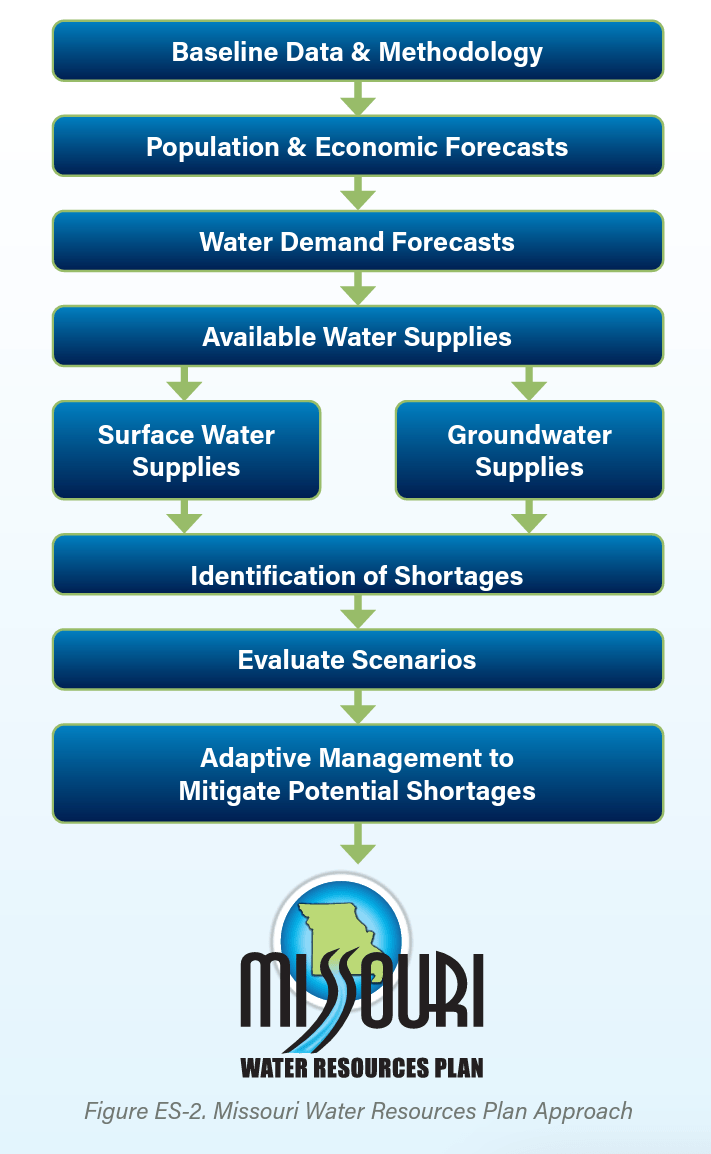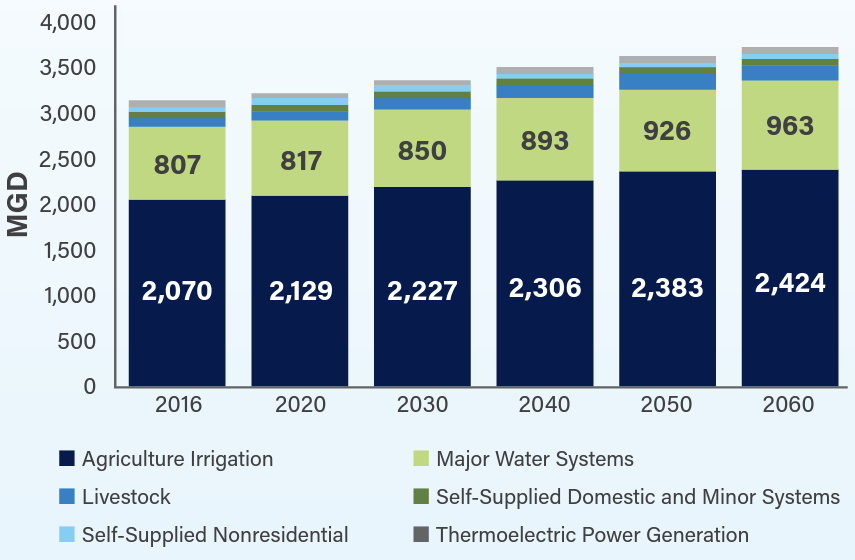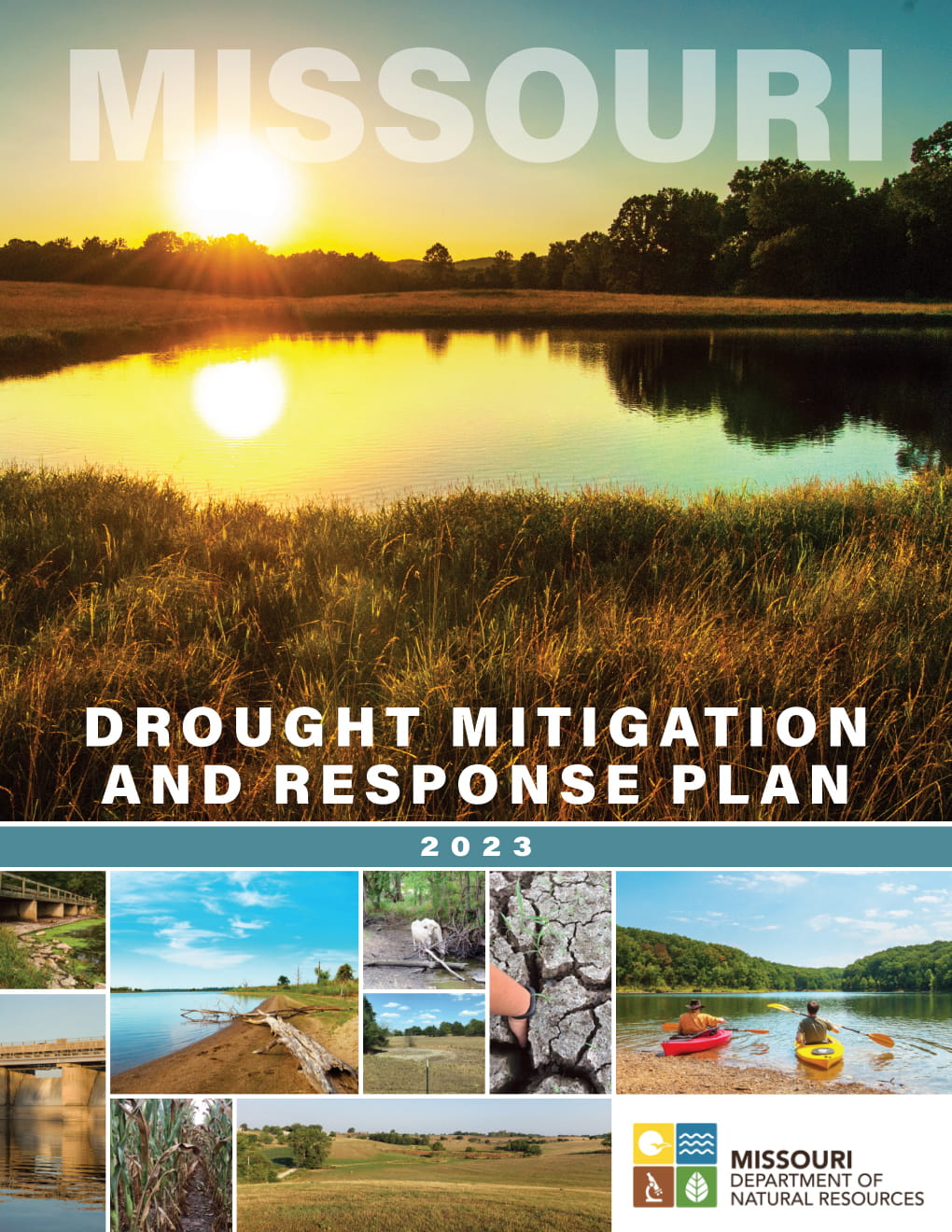A Statewide Water Resources Plan for Missouri
Missouri is known for its American greats: the Kansas City Chiefs, a bountiful agricultural industry, the homeland of literary legend Mark Twain, and stellar slow-smoked barbecue to boot. It’s also known for its typically plentiful water resources. Thousands of miles of sprawling rivers, streams, lakes, and underground aquifers support the state’s 6 million residents with clean water to sustain its urban and rural populations as they live, work, and play. Above any other natural resource, high-quality water is essential to support agriculture and industry, supplement Missouri’s power generation, maintain healthy aquatic ecosystems, and provide for numerous recreational activities.
While water resources are generally abundant through the state, localized water shortages can occur due to an extended lack of precipitation, distance from adequate supplies, infrastructure and storage issues, or quality constraints. Seasonal fluctuations pose issues when water demands are higher than available supplies, and on top of that, about 1.4 million more people are estimated to call the state home by 2060. As residential infrastructure grows, a big chunk of underlying water infrastructure will unfortunately be nearing the end of its life. Both aging and regional infrastructure needed rehabilitation, investment, and expansion.
 MoDNR, USACE, and CDM Smith recognized the need to secure the state’s water resources and collaborated to create the Missouri Water Resources Plan. Developed with funding from the USACE’s Planning Assistance for States (PAS) program, this long-range plan provides an understanding of existing surface and groundwater use, projects future water demands, identifies potential challenges and shortfalls in water supplies, and recommends strategies to avoid or eliminate potential shortfalls. Recognizing the uncertainty of future projections, the team also implemented scenario planning tactics to evaluate future water needs under different hydrologic and economic conditions. “Even before development of this plan, it was recognized that technical, managerial, and economic resources are limited in certain portions of the state. The plan encourages regionalization and consolidation of water systems to improve resilience and promote a sustainable water supply, especially in the areas projected to see increasing levels of water stress,” said John Boyer, project technical leader.
MoDNR, USACE, and CDM Smith recognized the need to secure the state’s water resources and collaborated to create the Missouri Water Resources Plan. Developed with funding from the USACE’s Planning Assistance for States (PAS) program, this long-range plan provides an understanding of existing surface and groundwater use, projects future water demands, identifies potential challenges and shortfalls in water supplies, and recommends strategies to avoid or eliminate potential shortfalls. Recognizing the uncertainty of future projections, the team also implemented scenario planning tactics to evaluate future water needs under different hydrologic and economic conditions. “Even before development of this plan, it was recognized that technical, managerial, and economic resources are limited in certain portions of the state. The plan encourages regionalization and consolidation of water systems to improve resilience and promote a sustainable water supply, especially in the areas projected to see increasing levels of water stress,” said John Boyer, project technical leader.
In developing the plan, CDM Smith worked closely with MoDNR and USACE to involve stakeholders in all key water use sectors state-wide. The team included several key stakeholder engagement activities to build the plan out with the community in mind. Five technical workgroups were established by topic area: Consumptive Needs, Nonconsumptive Needs, Infrastructure Needs, Agricultural Needs, and Water Quality. The technical workgroups were instrumental in reviewing growth and water demand projections, the results of water availability assessments, and identifying the most promising water management strategies. The team also collaborated with local governments and the State Interagency Task Force that was convened to promote coordination among state departments and water resource stakeholders.
One of the keys to a successful, large-scale, data-driven planning effort is building and maintain a great working relationship with the client and project sponsors.
Surface water and groundwater budgets were developed for each of the nine major planning sub regions within Missouri. The water budgets account for the movement of water within the hydrologic cycle and the movement of water from human activity. Projected 2060 water demands were incorporated into the water budgets to identify possible areas where demands may exceed supplies, especially during drought conditions. “I was excited to have the opportunity to apply scenario planning methods at the state-level, which is something that to my knowledge, has not been done before in any state,” Boyer said. “This allowed the planning team to explore where potential changes in water use, climate, regulations, and other factors may have the most impact on water resource availability and use, and then identify strategies to deal with that uncertainty and risk.”
Throughout the plan’s development, the team identified several key actions and recommendations to improve management of water resources, enhance sustainability, and promote resiliency across all water use sectors. One of the first recommendations to be implemented was updating the state’s drought plan to better prepare for dry periods, especially after the state faced significant droughts in 2012, 2018, and 2022. The recently completed 2023 Drought Mitigation and Response Plan, prepared by CDM Smith, MoDNR, and USACE, explores different types of droughts, identifies their impacts, and offers strategies to reduce the overall vulnerability to drought for different regions of the state.

Current and Projected Statewide Water Consumption by Sector
Another key recommendation was to take a proactive approach to water supply and shortages in the agriculture industry. By tracking the goals and initiatives of the industry, water needs can be predicted and satisfied before they occur, avoiding shortages before it’s too late. To prepare for dry periods, the Missouri Water Resources Plan encourages stakeholders to prepare plans to maintain a sufficient water supply for livestock and irrigating pastures during dry spells. Additionally, an adaptive management approach was proposed to monitor activities posing a risk to water resources while encouraging support for projects that mitigate risk and secure water supply, like optimizing reservoir storage and developing new storage infrastructure in regions projected to face increasing water stress.
 The Missouri Water Resources Plan is an essential road map to inform water users, decision-makers, and residents the best methods to secure their water for the future. As evidenced by the recently completed Missouri Drought Mitigation and Response Plan, MoDNR is having success implementing the plan through ongoing studies, data collection, policy updates, and project financing. “One of the keys to a successful, large-scale, data-driven planning effort is building and maintain a great working relationship with the client and project sponsors. MoDNR and USACE were responsive, supportive, and always provided timely feedback and direction. Working with this team has been a highlight of my career,” said Boyer.
The Missouri Water Resources Plan is an essential road map to inform water users, decision-makers, and residents the best methods to secure their water for the future. As evidenced by the recently completed Missouri Drought Mitigation and Response Plan, MoDNR is having success implementing the plan through ongoing studies, data collection, policy updates, and project financing. “One of the keys to a successful, large-scale, data-driven planning effort is building and maintain a great working relationship with the client and project sponsors. MoDNR and USACE were responsive, supportive, and always provided timely feedback and direction. Working with this team has been a highlight of my career,” said Boyer.

The plan encourages regionalization and consolidation of water systems to improve resilience and promote a sustainable water supply, especially in the areas projected to see increasing levels of water stress.








